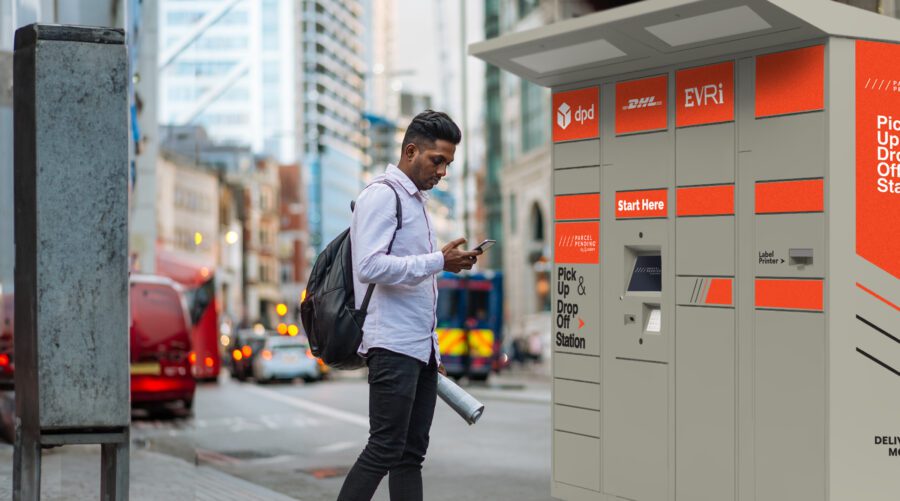Multifamily
How Homebuilders Can Develop Safer Neighborhoods
Written by: Parcel Pending
8 Min Read
Published: June 12, 2019
Updated: April 4, 2023
Safe neighborhoods lead to stronger and happier communities, and homebuilders are in a unique position to improve the safety of their neighborhood through development. When a community is safe, parents are free to raise their children without having to worry about crime, and neighbors feel comfortable to socialize, which is extremely important to building a strong sense of community. Homebuyers prioritize safety, among other new home features, when evaluating between homes, making it even more lucrative for homebuilders to invest in. Below we will discuss different ways home builders can contribute to increased home and neighborhood safety through both single home improvements and community enhancements.
Make It Bright!
One of the hallmarks of a safe neighborhood is adequate lighting. Criminals like to operate in the dark and are often deterred when they encounter well-lit homes. The chances that they get caught is vastly increased by good lighting.
There are several ways you can improve the lighting conditions of a home that you’re building, including:
- Strategically Place Light Fixtures: Carefully placed lighting can make a real difference when it comes to preventing crime in your neighborhood as well as a better community experience. The higher up you place a light fixture, the more it will simulate natural light and the larger the surface area the light will cover. If your goal is to illuminate the outside of your home, opt for high-hanging lights instead of lights that are built near the ground.
- Use Bright Paint: A darkly painted home is eye candy for a would-be thief. If you opt instead for bright coats of paint, not only will criminals be deterred, but the light from your fixtures will carry farther and illuminate the home in an even greater way.
- Opt for Brighter Bulbs: While yellow lights might be appealing to some, it’s not the best choice if security is your priority. Large LED bulbs produce light that carries much farther and makes it easier to identify people and objects in a given setting.
Because these strategies are a great way to improve the lighting conditions of an individual home, homebuilders should encourage others in the neighborhood to adopt these practices as well for a safer overall community.
Create Opportunities for Community Interaction
One of the hallmarks of a safe neighborhood is community interaction. If residents know each other and are comfortable with one another, they will feel inclined to warn each other of possible suspicious activity and will feel comfortable reaching out if they feel threatened in any way.
While it may seem like large-scale public works projects like parks and schools are the best way to create a positive community atmosphere, it’s possible to cultivate this quality experience on a smaller scale, starting with small additions to your home.
Consider some simple options:
- Leave Room for a Lawn: If you have the space for it, building a lawn is a great way to make your home feel more inviting to the rest of the neighborhood. Keeping it clean and well-tended is a good sign to potential criminals that the homeowners are vigilant. Hanging out on the lawn also gives you the opportunity to meet the people in your neighborhood.
- Fun Additions: In every neighborhood, there is a house or two that stands out because it offers something engaging for the community. For example, if your building on a property that is surrounded by trees, consider adding a tire swing.
Build Secure Homes
When individual homes are built with security in mind, the neighborhood at large benefits. It develops a crime-resistant reputation, and wrongdoers are encouraged to operate in other areas.
Building a secure home is a multi-step process. There are many different ways to approach building security into a property, and the best homes will incorporate several different strategies. It’s also wise to encourage your neighbors to also adopt some of the easier security improvements. Each one will make the neighborhood a safer place and will attract more good neighbors.
- Gates and Fences: While including gates and fences in your home design might not be the best way to make your home community-friendly, it’s a practical and surefire way to deter criminals. Homes that are easy to access are often the first targeted by thieves.
- Prevent Package Theft: One of the most common and easiest urban crimes to commit is parcel theft. Most people have either experienced it firsthand or know someone that has had a package stolen. It’s easy for the criminal, and most homes don’t have security cameras to catch them in the act. Companies like Parcel Pending have helped to prevent package theft by creating parcel lockers to store all your incoming package deliveries. Additionally, these single-family parcel lockers come with 24/7 cloud-based video surveillance so you can document anyone who attempts a theft, making them that much easier for the police to track. Whether you’re building a single-family home or a multi-family housing community, smart lockers are an ideal way to consolidate deliveries into a single protected location that is only accessible by people with authorized access. They are space-efficient, equipped with infrared scanners to detect packages, refrigerated so that perishables may be stored, and, most importantly, are completely secure.
- Install a Security System: This step is a no-brainer and homes that have already been built can install these systems retroactively. If anyone unwanted tries to enter the home, the security system will sound a loud alarm, startling the intruder and will typically alert local authorities that a home invasion is underway.
- Install Security Cameras: The mere sight of a security camera is often enough to deter suspicious characters. For that reason, it’s best to place them in a conspicuous location instead of hiding them out of sight. If something were to happen, they can catch criminals in the act.
- Secure Your Garage: Recent crime trends suggest that garages are an increasingly popular entry point for home invaders. In many cases, this is because the garage is not properly secured, or large windows reveal items that may catch a criminal’s eye. When building, try to eliminate easy entry points and be sure to lock up whenever you’re not using it.
Remove Opportunity to Commit Crimes
If you want to keep criminals and suspicious characters out of your neighborhood, don’t tempt them with easy opportunities to commit crimes. Contrary to popular belief, most criminals act rationally when committing crimes, and will go after targets that offer high rewards at the least possible risk.
There are several different ways that you can remove these temptations, and as a homebuilder, you’re in the unique position to implement these strategies during the development phase:
- Avoid Large, Street-Facing Windows: Criminals are less likely to enter your home if the possible rewards are unknown. That’s why homes with large windows are often targeted. Through the window, they might spot T.V.s, stereo systems, art, or any other valuable items that might tempt them. If you’re set on installing large windows, consider placing them on the second floor.
- Large Shrubs Make Great Hiding Spots: Think twice before including large shrubs or bushes outside your home. While they may add a nice aesthetic touch, they also offer criminals an ideal hiding spot.
Again, one of the ways you can entice suspicious characters to enter your neighborhood is by giving them easy opportunities to commit crimes. By making adjustments to your home, you’re doing your entire neighborhood a favor.
Maintain Cleanliness
Clean neighborhoods make a statement. They say to criminals that residents care about their homes and are generally active around their properties. If they enter a neighborhood where homes seem unmaintained, they figure that residents are either frequently away, or they don’t care enough about their homes to invest in security measures.
Keeping your property clean also has an effect on your neighbors. Nobody wants to own the unkempt property adjacent to the well-maintained property. Maintaining cleanliness can have a domino effect on the neighborhood, where the vigilance of one home encourages the vigilance of another.
To maintain cleanliness, make sure you:
- Maintain Your Yard: When someone looks at your home, your yard is the first thing that will catch their eye. Is your grass cut or overgrown? Is there trash or debris on the premises? Are your plants wilting or are they green and thriving? Regularly tending to your yard not only improves the visual quality of your home but also creates the opportunity to interact with neighbors who might be passing by.
- Stay Tidy During Construction: Even if you’re only modifying part of a home or adding a small addition, it’s important to make sure that the construction site is well-maintained. With so much going on, it’s easy to fall into unorganized disarray, and while to some extent this sort of mess is inevitable, it should be cleaned at the end of every workday.
- Consolidate Space: Homes that are extravagantly built are often difficult to maintain. You shouldn’t be stopped from building a home that best suits your taste, but you should be cognizant of the way the design of your home will directly impact your ability to keep it clean.
Meet the Neighbors
As a homebuilder, you’re going to be a focal point of the neighborhood. Using that attention to build relationships is a great way to bring the community together and introduce yourself to residents you might not otherwise come into contact with.
When a community is close-knit, residents are more likely to report suspicious activity around their neighbors’ homes and are more comfortable discussing neighborhood issues with one another. If you’re looking for ways to jump-start your neighborhood’s sense of community, consider some of these strategies:
- Neighborhood Watch Programs: Neighborhood Watch Programs serve several valuable functions. First and foremost, they exist for the purpose of increasing the safety of your neighborhood. Residents work together to identify suspicious activity and characters and then resolve the problem through a coordinated effort. They also offer an excuse to get together, socialize, and strengthen the social fabric of the community.
- House Warming Party: Once either the house or the renovations are complete, you should consider throwing a housewarming party. By turning your house into a venue where neighbors can meet one another, you will directly contribute to the increased safety of the community.
- Organize a Block Party: With approval from the city, you can shut down your block for an entire day and host a block party. There are few better ways to bring a neighborhood together. The party itself creates a memory that the community can hold on to, and it also allows other blocks and neighbors to get involved in the process of organizing and hosting the event.
Final Thoughts on Neighborhood Safety
As you can probably tell, the number one way to improve the safety of your community is by strengthening the social ties between neighbors. However you decide to engage the community, remember that the more people involved the better the outcome.
Check out our community safety ideas for more ways communities can implement to stay safe.
- Community Safety Guide. (2019, April 05). Retrieved April 6, 2019, from https://www.safehome.org/resources/community-safety-guide/
- Johnston, H. (2018, November 01). 8 Simple Ways to Make Your Neighborhood Safer. Retrieved April 6, 2019, from https://www.safewise.com/blog/8-simple-ways-make-neighborhood-safer-place/Weise, E. (2018, December 14).
- Were your Amazon packages stolen? Porch pirates run rampant this holiday season. Retrieved April 6, 2019, from https://www.usatoday.com/story/tech/2018/12/14/porch-pirates-package-theft-climb-more-americans-shop-online/2218910002/



